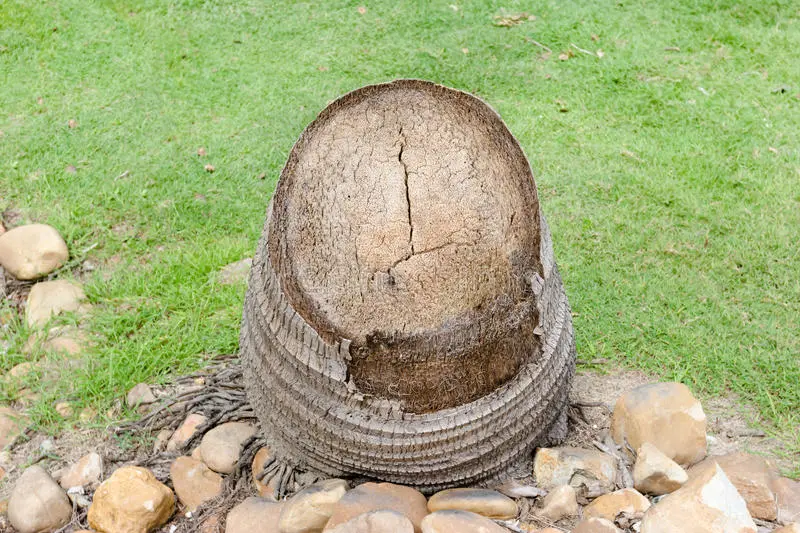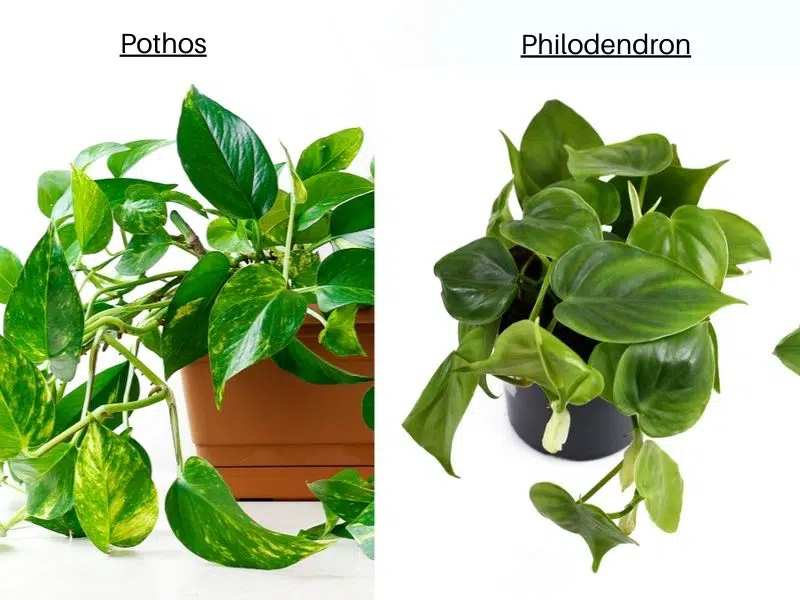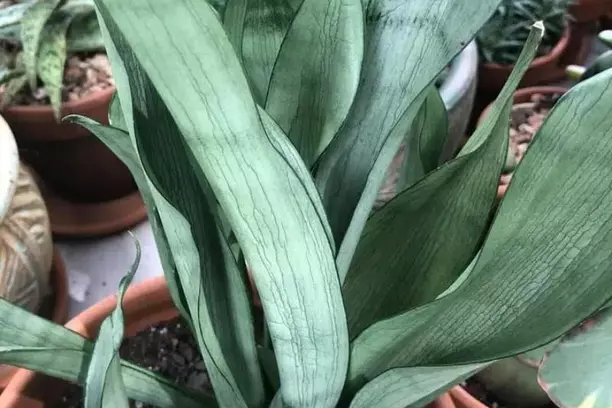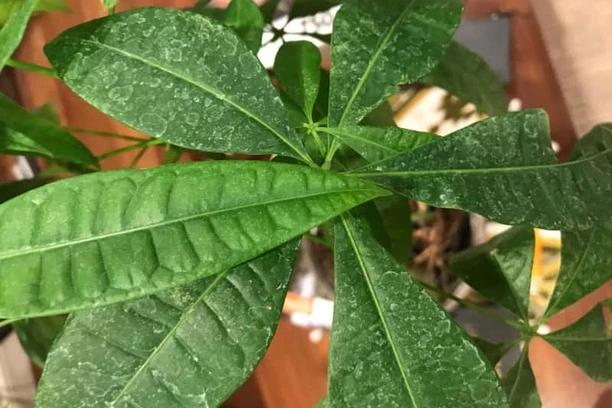Snake plants, also known as Sansevieria trifasciata or Dracaena trifasciata, are popular houseplants due to their hardiness and low maintenance. If your snake plant is turning yellow, this can be concerning, as yellowing leaves can be a sign of various problems, including overwatering, underwatering, pests, or diseases.
The first step is to assess its growing conditions. Snake plants prefer bright, indirect light and well-draining soil. Overwatering is a common cause of yellowing leaves, as it can lead to root rot and other fungal diseases. On the other hand, underwatering can cause the leaves to dry out and turn yellow as well. Pests, such as spider mites or mealybugs, can also cause damage to the leaves and result in yellowing.
Understanding Snake Plant Yellowing
Symptoms
Yellowing of snake plant leaves is a common problem that can be caused by various factors. The most noticeable symptom is the yellowing of the leaves. Initially, the yellowing starts from the tip of the leaves and gradually spreads toward the base. The leaves may also become soft and mushy, and eventually die off. In severe cases, the entire plant may become yellow and wilted.
Causes
There are several reasons why snake plant leaves turn yellow. Here are some of the most common causes:
- Overwatering: Snake plants are drought-tolerant and do not require frequent watering. Overwatering can cause the roots to rot, leading to yellowing of the leaves.
- Underwatering: On the other hand, underwatering can also cause the leaves to turn yellow. When snake plants do not receive enough water, the leaves may become dry and brittle.
- Poor drainage: Snake plants require well-draining soil. If the soil is too compact or does not drain well, it can cause water to accumulate around the roots, leading to the yellowing of the leaves.
- Lack of sunlight: Snake plants require bright, indirect sunlight to thrive. If the plant is kept in a dark or poorly lit area, the leaves may become yellow and weak.
- Pests and diseases: Snake plants are generally resistant to pests and diseases, but they can still be affected by spider mites, mealybugs, and other pests. These pests can cause yellowing of the leaves and other symptoms.
In conclusion, yellowing of snake plant leaves can be caused by several factors, including overwatering, underwatering, poor drainage, lack of sunlight, and pests and diseases. By understanding the causes and symptoms, you can take the necessary steps to prevent and treat the yellowing of snake plant leaves.
Watering issues on snake plants
Snake plants are known for their hardiness and ability to thrive in a variety of conditions. However, improper watering can cause yellowing of the leaves and other issues. Here are some common watering issues to watch out for when caring for your snake plant:
Overwatering
Overwatering is a common issue that can lead to yellowing of the leaves, mushy roots, and even root rot. Snake plants prefer well-draining soil, so it’s important not to let them sit in water for too long. If you notice that the soil is consistently moist or the pot has standing water, you may be overwatering your plant. To fix this issue, allow the soil to dry out completely before watering again and adjust your watering schedule accordingly.
Underwatering
While snake plants are drought-tolerant, they still need regular watering to thrive. Underwatering can cause the leaves to turn yellow, dry out, and even curl up. To prevent this, make sure to water your snake plant regularly and monitor the soil moisture. If the soil feels dry to the touch, it’s time to water your plant.
Watering Schedule
Establishing a consistent watering schedule is key to keeping your snake plant healthy. Depending on the environment, you may need to water your plant every 1-2 weeks. It’s important to monitor the soil moisture and adjust your watering schedule as needed. During the winter months, you may need to water your snake plant less frequently.
Soil Moisture
The soil moisture level is an important factor to consider when watering your snake plant. Snake plants prefer well-draining soil that is moist but not soggy. To check the soil moisture level, stick your finger into the soil about an inch deep. If the soil feels dry, it’s time to water your plant. If the soil feels wet or soggy, you may be overwatering your plant.
Soggy Soil
Soggy soil can lead to root rot and other issues. If you notice that the soil is consistently wet or there is standing water in the pot, you may need to repot your snake plant into a container with better drainage. It’s also important to adjust your watering schedule and avoid overwatering your plant.
Dry Soil
Dry soil can cause the leaves to turn yellow and dry out. If you notice that the soil is consistently dry, you may need to water your snake plant more frequently or adjust your watering schedule. It’s important to monitor the soil moisture and adjust your watering habits as needed to keep your snake plant healthy and thriving.
Light and Temperature Factors
The snake plant is a hardy plant that can tolerate a range of light and temperature conditions. However, certain factors can cause the plant to turn yellow, such as poor light conditions or temperature fluctuations.
Light Conditions
Snake plants prefer bright, indirect light. Direct sunlight can scorch the leaves and cause them to turn yellow. Low light conditions can also cause the leaves to turn yellow, as the plant is not receiving enough light to photosynthesize properly. If the plant is not receiving enough light, it may be necessary to move it to a brighter location.
Temperature
Snake plants prefer temperatures between 60-85°F (15-29°C). Temperature fluctuations or sudden changes in temperature can cause the leaves to turn yellow. If the plant is in a location with drafts or near a heating or cooling source, it may be necessary to move it to a more stable location.
Light and Temperature Change
If the plant is moved from a location with poor light conditions to a location with brighter light, it may experience some shock and the leaves may turn yellow. Similarly, if the plant is moved from a location with warm temperatures to a location with cooler temperatures, it may also experience shock and the leaves may turn yellow. It is important to acclimate the plant slowly to any changes in light or temperature to prevent shock.
In summary, the snake plant prefers bright, indirect light and stable temperatures between 60-85°F (15-29°C). Avoid exposing the plant to direct sunlight, low light conditions, or temperature fluctuations. Slowly acclimate the plant to any changes in light or temperature to prevent shock.
Soil and Drainage Conditions
Snake plants are hardy and can tolerate a variety of soil conditions. However, if your snake plant is turning yellow, it could be due to soil and drainage issues. Here are some factors to consider:
Soil Conditions
Snake plants prefer well-drained soil that is slightly acidic with a pH between 5.5 and 7.5. They can tolerate a range of soil types, including sandy, loamy, and clay soils. However, compact soil can cause poor drainage, which can lead to root rot and yellowing leaves.
Drainage
Proper drainage is crucial for snake plants. They are susceptible to root rot if the soil is too wet. To ensure good drainage, use a potting mix that contains perlite or vermiculite. These materials help to aerate the soil and prevent water from accumulating around the roots.
Poor Drainage
If your snake plant is turning yellow, it could be due to poor drainage. Overwatering or using a pot without drainage holes can cause water to accumulate around the roots, leading to root rot and yellowing leaves. To avoid this, make sure that your pot has drainage holes and that you allow the soil to dry out between waterings.
Improper Soil
Using the wrong type of soil can also cause yellowing leaves in snake plants. Avoid using heavy garden soil or soil that is designed for other types of plants. Instead, use a well-draining potting mix that is specifically formulated for indoor plants.
In summary, soil and drainage conditions are important factors to consider when caring for a snake plant. Make sure to use a well-draining potting mix and a pot with drainage holes to prevent water from accumulating around the roots. Avoid using heavy garden soil or soil that is designed for other types of plants.
Nutrient Deficiency and Overfertilization
When a snake plant starts to turn yellow, it could be a sign of nutrient deficiency or overfertilization. Both can cause damage to the plant and affect its growth.
Overfertilization occurs when the plant receives too much fertilizer, causing an excess of nutrients that can harm the plant. Excess fertilizer can lead to salt accumulation in the soil, which can block the roots from absorbing nutrients and water. This can cause the leaves to turn yellow, and in severe cases, the plant can die.
On the other hand, nutrient deficiency occurs when the plant does not receive enough nutrients, which can also cause the leaves to turn yellow. The most common nutrient deficiencies in snake plants are nitrogen, potassium, phosphorus, and magnesium. Each of these nutrients plays an important role in the plant’s growth and development.
To avoid nutrient deficiency or overfertilization, it is essential to fertilize the plant properly. Use a balanced fertilizer with equal amounts of nitrogen, phosphorus, and potassium, and follow the manufacturer’s instructions for application. It is also important to avoid overwatering the plant, as this can lead to nutrient leaching and mineral imbalances.
In summary, nutrient deficiency and overfertilization can cause the leaves of a snake plant to turn yellow. Proper fertilization and watering practices can help prevent these issues and keep your plant healthy and thriving.
Pests and Diseases
Snake plants are generally easy to care for, but they can still be susceptible to pests and diseases. Here are some common issues to be aware of:
Pests
- Mealybugs: These small, white insects can be found on the leaves and in the soil. They feed on the plant’s sap and can cause yellowing and wilting. To get rid of them, wipe the leaves with a cotton swab dipped in rubbing alcohol or use insecticidal soap.
- Spider mites: These tiny pests can be difficult to spot, but they can cause yellowing and brown spots on the leaves. They thrive in dry conditions, so increasing humidity can help prevent an infestation. A spray of water can also help dislodge them.
- Aphids: These small, soft-bodied insects can be found on the leaves and stems. They suck sap from the plant and can cause yellowing and curling of the leaves. Insecticidal soap or neem oil can be effective in controlling them.
- wScale: These insects are small and flat, and they can be found on the leaves and stems. They suck sap from the plant and can cause yellowing and wilting. Rubbing alcohol or insecticidal soap can be used to control them.
Diseases
- Fungal diseases: Overwatering or poor drainage can lead to fungal growth, which can cause yellowing and wilting of the leaves. To prevent this, make sure the soil is well-draining and avoid overwatering. If you notice signs of fungal growth, remove the affected leaves and treat with a fungicide.
- Thrips: These small, slender insects can cause yellowing and silvery streaks on the leaves. They can be difficult to control, but insecticidal soap or neem oil can be effective.
- Pest infestations: If you notice multiple pests on your snake plant, it may be a sign of a larger infestation. In this case, it’s best to isolate the plant and treat it with insecticidal soap or neem oil.
Overall, it’s important to keep an eye on your snake plant for signs of pests or diseases. With proper care and attention, you can keep your plant healthy and thriving.
Care and Maintenance of Snake Plants
Snake plants, also known as mother-in-law’s tongue, are a popular indoor plant due to their hardiness and ease of care. However, like any plant, they require some maintenance to keep them healthy and thriving. Here are some tips for caring for your snake plant:
Lighting and Watering
Snake plants prefer bright, indirect light and can tolerate low-light conditions. However, they should not be placed in direct sunlight, as this can cause burn damage to their leaves.
When it comes to watering, snake plants are succulents and can store water in their leaves. It’s important not to overwater them, as this can cause their roots to rot. Allow the soil to dry out completely between waterings, and be sure not to let the plant sit in standing water.
Feeding and Pruning
Snake plants do not require frequent feeding, but a balanced fertilizer can be applied once a month during the growing season (spring and summer).
Pruning is not necessary for snake plants, but if the plant becomes too large or unruly, it can be trimmed back. Be sure to use clean, sharp shears and cut at an angle to prevent damage to the plant.
Repotting and Humidity
Snake plants prefer to be slightly root-bound and do not require frequent repotting. However, if the plant becomes too large for its container or the soil becomes compacted, it can be repotted in fresh soil.
Snake plants are tolerant of low humidity levels, but they may benefit from occasional misting or placement near a humidifier.
Turning Yellow and Weakness
If your snake plant is turning yellow, it may be a sign of overexposure to direct sunlight or overwatering. Adjust the plant’s lighting and watering schedule accordingly.
Weakness in snake plants can be caused by aging or poor growing conditions. Ensure that the plant is receiving adequate light and water, and consider fertilizing during the growing season.
Overall, snake plants are low-maintenance indoor plants that can thrive in a variety of growing conditions. With proper care and maintenance, your snake plant can remain healthy and beautiful for years to come.
How to Save a Yellowing Snake Plant
If you notice your snake plant’s leaves turning yellow, it may be a sign of stress or damage. Fortunately, there are several steps you can take to revive your plant and bring it back to good health.
First, identify the cause of the yellowing leaves. Common causes include leaf burn from too much direct sunlight, under-watering, inconsistent watering, or neglect. If your plant is in a container, make sure it has proper drainage to prevent water from pooling at the bottom and causing root rot.
If the cause of the yellowing leaves is chlorosis, a condition where the plant is not getting enough nutrients, you can try fertilizing your plant with a balanced fertilizer. Follow the instructions on the fertilizer packaging carefully, as over-fertilizing can also cause damage to your plant.
To save a yellowing snake plant, follow these steps:
- Remove any yellow or damaged leaves with clean, sharp scissors or pruning shears. This will encourage new growth and prevent the plant from wasting energy on damaged leaves.
- Repot the plant if it is root-bound or if the container is too small. Use a well-draining soil mix and a container with drainage holes.
- Water the plant deeply, but only when the top inch of soil feels dry to the touch. Avoid over-watering, as this can lead to root rot.
- Place the plant in bright, indirect sunlight. Avoid direct sunlight, as this can cause sunburn and further damage to the leaves.
With proper care and attention, your snake plant can recover from yellowing leaves and thrive once again.
Frequently Asked Questions
Why is the tip of my snake plant turning yellow?
The tip of a snake plant may turn yellow due to overwatering or underwatering. It could also be a sign of natural aging or damage caused by pests.
Can yellow snake plant leaves turn green again?
Yellow leaves on a snake plant cannot turn green again. However, if the cause of the yellowing is corrected, new growth will emerge and be green.
Why is my snake plant turning light green?
A snake plant may turn light green due to insufficient light or overwatering. It could also be a sign of nutrient deficiency.
Why is my snake plant dying?
A snake plant may be dying due to overwatering, underwatering, or exposure to extreme temperatures. It could also be a sign of pest infestation or disease.
Why is my snake plant falling over?
A snake plant may fall over due to weak or damaged roots caused by overwatering or underwatering. It could also be a sign of pot size being too small or top-heavy growth.
References
- Chase, A. R. (2002). Sansevieria (Mother-in-Law’s Tongue). University of Florida IFAS Extension. Retrieved from https://mrec.ifas.ufl.edu/foliage/folnotes/sansevie.htm
- CABI. (2019). Sansevieria trifasciata (mother-in-law’s tongue). CABI Compendium. Retrieved from https://www.cabidigitallibrary.org/doi/10.1079/cabicompendium.48196



